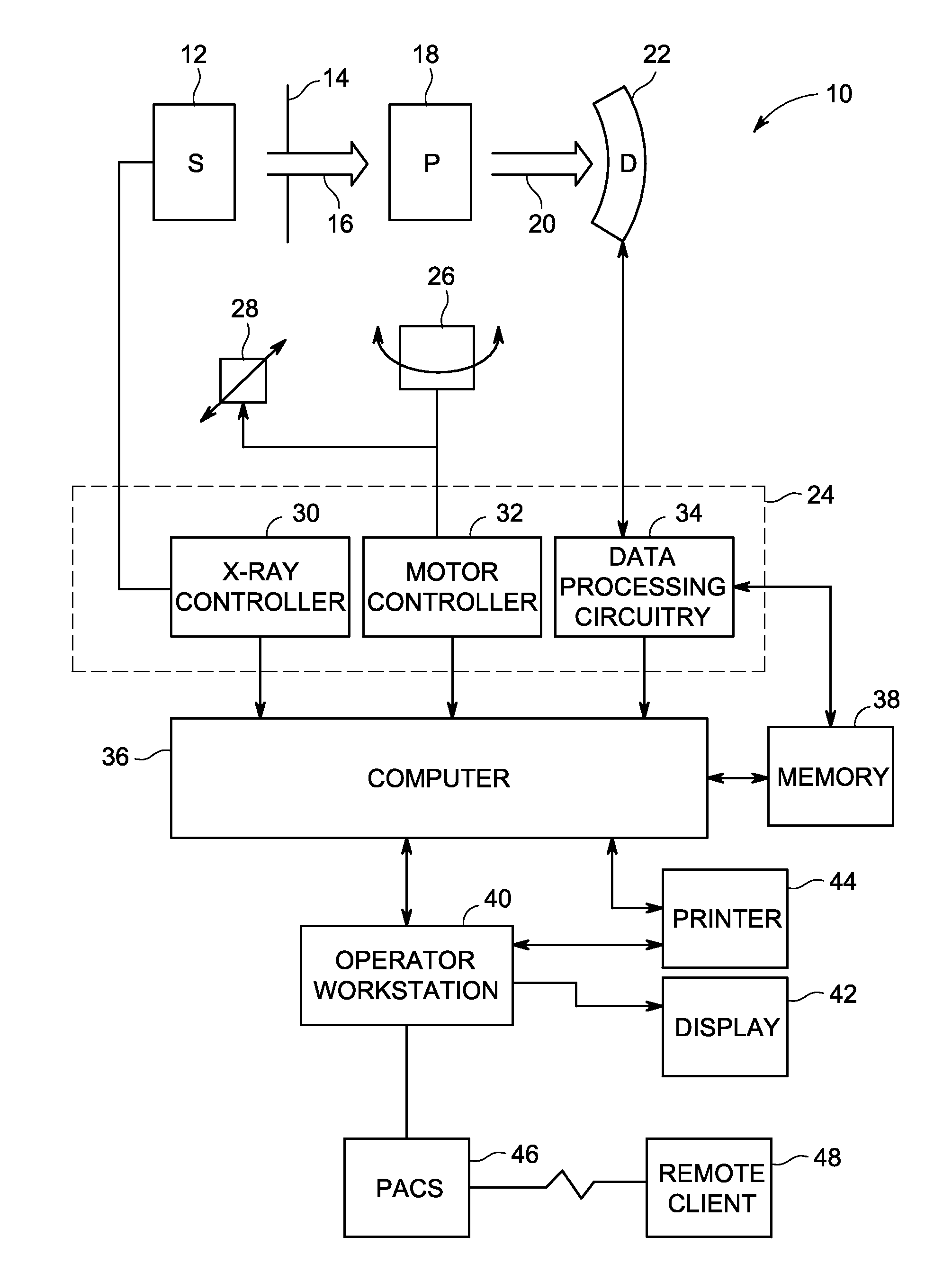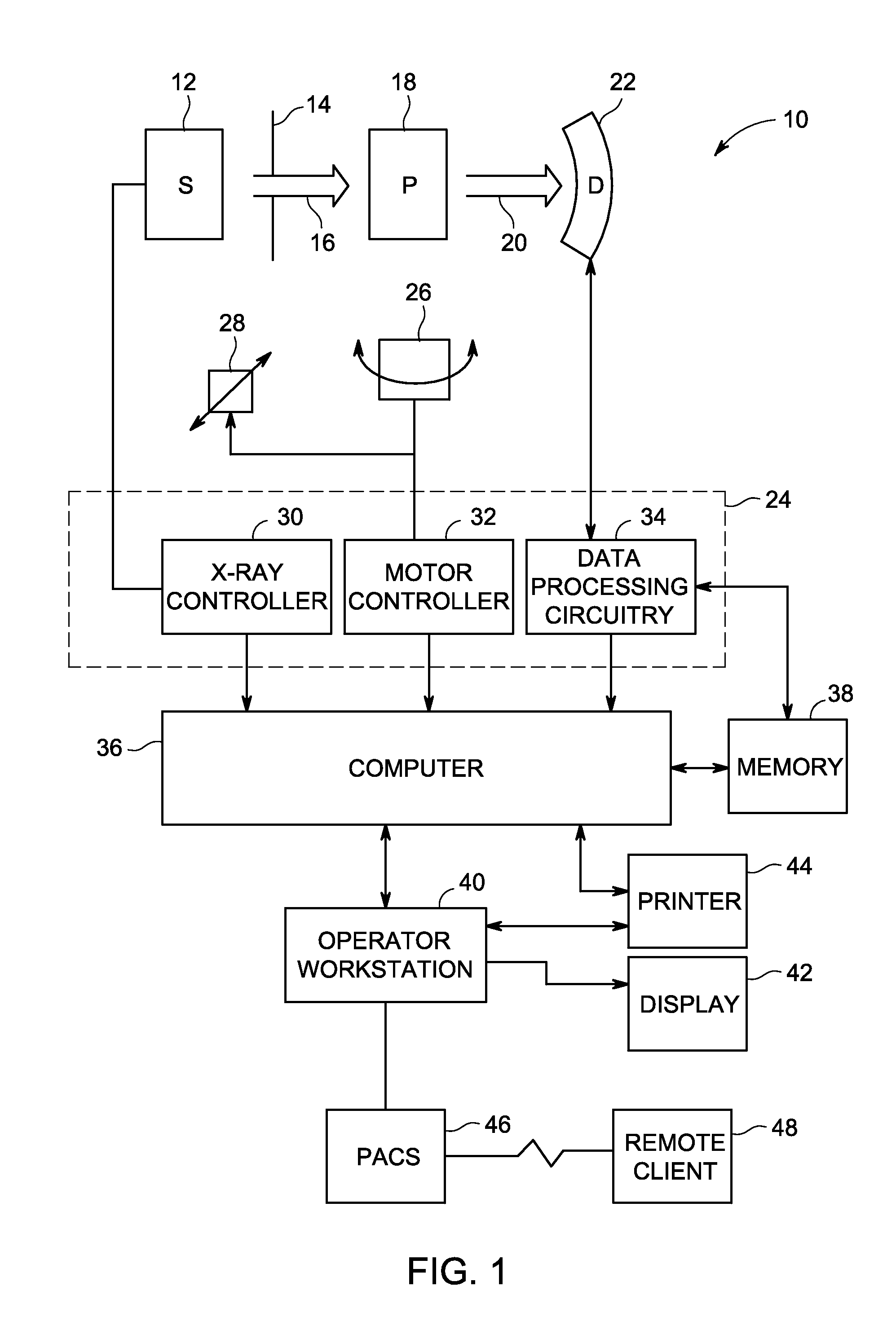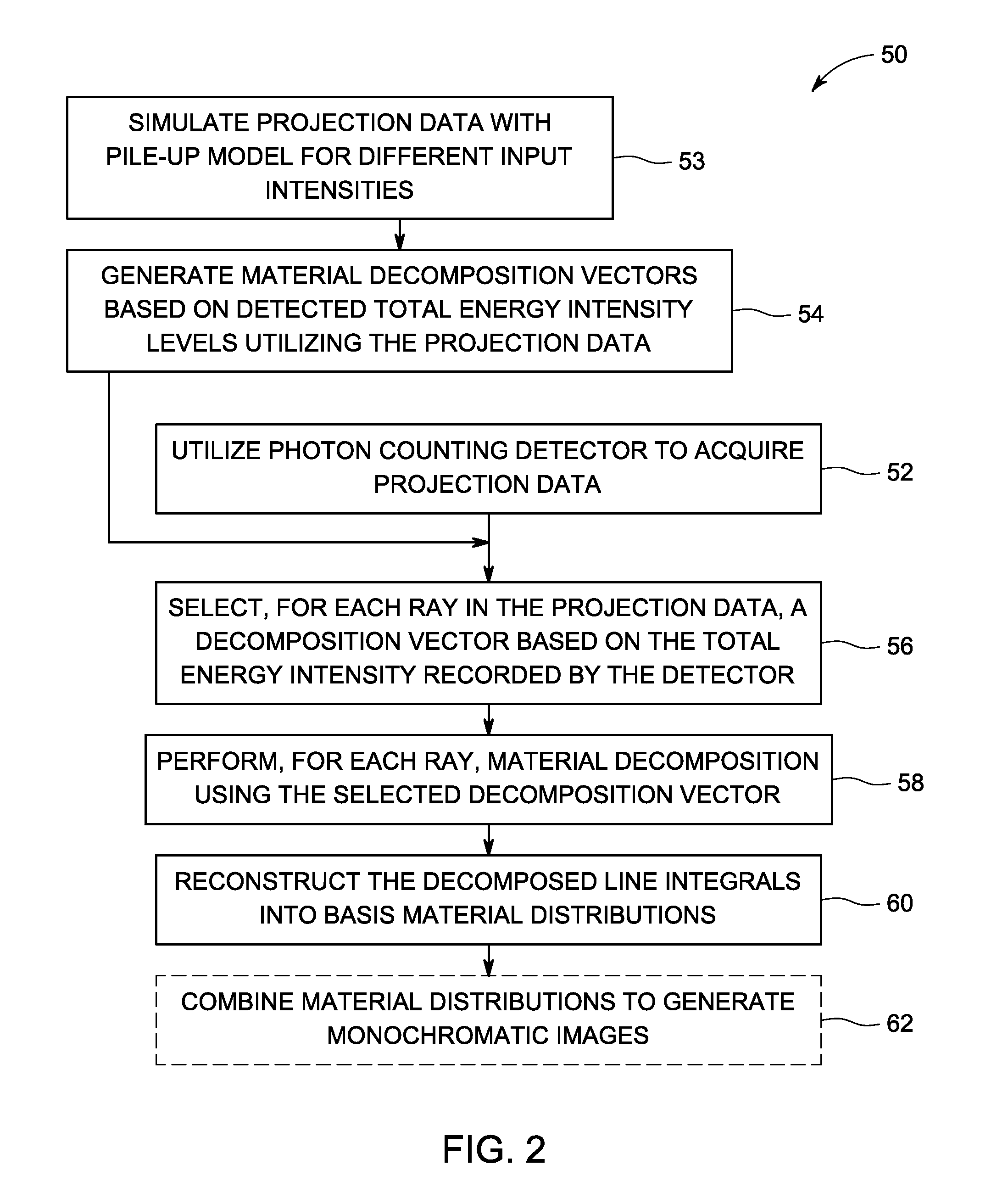Systems and methods for correcting detector errors in computed tomography imaging
a computed tomography and detector error technology, applied in tomography, instruments, applications, etc., can solve problems such as material and electronics cannot keep, material and electronics are unable to keep up, and the detected signal is distorted dramatically
- Summary
- Abstract
- Description
- Claims
- Application Information
AI Technical Summary
Benefits of technology
Problems solved by technology
Method used
Image
Examples
Embodiment Construction
[0014]As described in more detail below, provided herein are systems and methods for combining detector pile-up correction and material decomposition in multi-energy X-ray imaging systems. Energy-discriminating, photon-counting detectors are widely recognized for their energy-discriminating capability, but their widespread clinical application has been impeded by the limited photon flux count rate capability that such detectors can accommodate. That is, the photon flux rate required to perform high-fidelity clinical computed tomography (CT) imaging exceeds the capabilities of the presently available energy-discriminating, photon-counting detectors. Even when the incident rate is a small fraction of the detector's maximum periodic count rate capability, a pile-up effect results in dramatic spectral distortions (both in terms of count and spectral shape) in the detected signal, thus presenting challenges for applying quantitative material decomposition methods as required in multi-ene...
PUM
 Login to View More
Login to View More Abstract
Description
Claims
Application Information
 Login to View More
Login to View More - R&D
- Intellectual Property
- Life Sciences
- Materials
- Tech Scout
- Unparalleled Data Quality
- Higher Quality Content
- 60% Fewer Hallucinations
Browse by: Latest US Patents, China's latest patents, Technical Efficacy Thesaurus, Application Domain, Technology Topic, Popular Technical Reports.
© 2025 PatSnap. All rights reserved.Legal|Privacy policy|Modern Slavery Act Transparency Statement|Sitemap|About US| Contact US: help@patsnap.com



